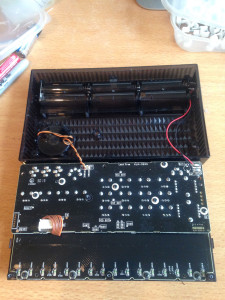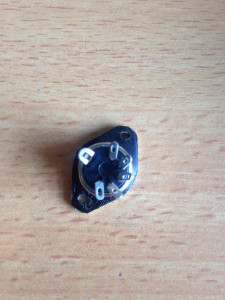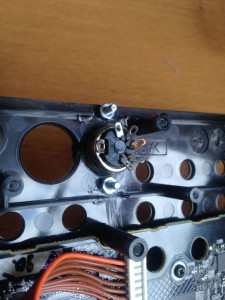People often ask me for tips on who to contact to get instruments, amplifiers or other gear repaired. I thought I’d collate a few contacts in one post to make it easier for people to find. A lot of them don’t have websites and rely on word of mouth. Their workshops are often wondrous places to visit.
Saxophones – Rupert Noble – Rupert Noble specialises in vintage and professional horn repairs, sales and purchases. His workshop in Hove is glorious. Expert renovation of Selmer, Conn, Buescher, Martin, King,Sml, Grafton etc and all modern horns. He also works on clarinets, flutes and other woodwind and has fixed my cornets and flugelhorns in the past. Based in Hove. 07799 398576 rupertnoblesax@googlemail.com
FX pedals / synths – Roland Drummond – has repaired lots of fx pedals for me such as a Memory Man, Little Lanilei and Walrus Audio Voyager, also installed this mod for my Fender Vibrolux and has repaired a drum machine. Always good work, reasonably priced and quick turnaround. Once he actually opened up a pedal in front of me, swapped out a fried component and gave it straight back. He also works with synthesizers, especially modular, and has an amazing looking home made system taking up a whole wall. Last time I was there he was building a modular video synth too. I think he also does pro audio gear and clones. Based by Preston Park. 07775 742495 rolandrum@hotmail.com
Synthesizers / pro audio – Rob Hukin – has repaired and modded countless things for me including my first ever ‘proper’ synth, a Yamaha CS5, Godwin String Concert, midi retrofit and general tune up for a Juno 60, some modifications to a Korg MS20M and more. His place is always full of insane, rare and very valuable synths, once I saw four or five 808s. I believe he’s worked for a lot of big names including Talk Talk, Squarepusher and Vangelis! Also does pro audio and lots of work for Brighton based recording studios too. Based by Preston Circus. 07961 883949 rob@audiocircus.co.uk
Banjos / acoustic guitars / mandolins / accordions… – for folk or ‘world’ instruments I’d recommend heading to Hobgoblin Music on Queens Road. They have a workshop at the back and can set up or repair all sorts of acoustic instruments. If they can’t help in store then they will be able to recommend someone who can.108 Queens Road, BN1 3XF Location Map 01273 760022 brighton@hobgoblin.co.uk
There are a few other people I’ve used only once or twice, or not at all but have heard good things about them:
- Woody’s Music – 12 Oxford Street, Brighton. Guitar and amplifier repairs and sales. 01273 272271 or 07757006447. Facebook page here.
- Brighton Guitar Workshop – based in Hove very near to Rupert’s sax emporium. Guitar and amplifier repairs and sales. 07578 916 284
info@brightonguitarworkshop.com Website. - Vincent Purcell – repairs and builds violins, violas, cellos and other string instruments. I’ve been to see him about double bass repair and he was very helpful and knowledgeable. Based in Hove. 01273 729081 vincent.purcell@yahoo.co.uk
- Peter Ratcliff – did an excellent repair to one of my double basses, used to mainly repair violins but now doesn’t do repairs any more as he focusses solely on dendrochronology – historical analysis of violins. If you need a dendrochronologist I’d recommend him! Facebook page ratcliffiddles@talk21.com 01273 720160








